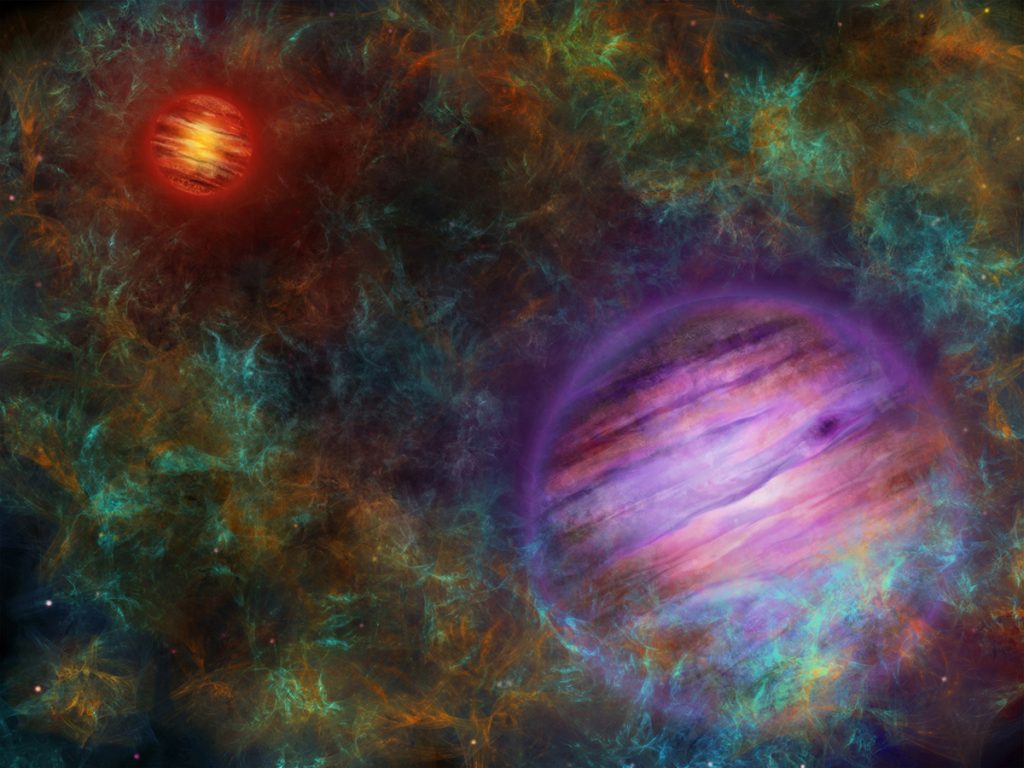
The line between a giant gas planet and a tiny brown dwarf star is ill-defined and much argued over, and this next story points toward why. The headline of the National Centre of Competence in Research, PlanetS office reads, “A pair of lonely planet-like objects born like stars,” but in the press release, these objects are described as brown dwarfs, which are a kind of star. I feel comfortable in saying that no one and everyone is partially right in describing this research.
Stars are defined as objects that at some point in their evolution have nuclear reactions in their core due to the fusion of some form of hydrogen that may progress to burning heavier and heavier elements. While objects larger than 100 Jupiter masses can burn regular hydrogen, which has just a proton, and live for trillions of years, objects down to maybe 11 Jupiter masses only burn heavier forms of hydrogen — deuterium and tritium, which have extra neutrons — for brief periods of millions of years before the just burn out.
So, if an object has nuclear reactions, it is a star. Beyond that, it is also thought that only stars form via the collapse and fragmentation of giant molecular clouds of gas, while planets form in a debris disk that swirls around the core of one of these collapsed cloud fragments.
That was a lot of background, but it is needed to understand this weirdo system, which is described in a new paper in The Astrophysical Journal Letters with lead author Clémence Fontanive.
Designated CFHTWIR-Oph 98, or just Oph 98 for short, this system contains two small objects that are 8 and 15 Jupiter masses in size. While the larger of these two may have had nuclear burning, the smaller one probably didn’t. These two objects are just barely holding onto each other gravitationally and are separated by a distance five times greater than the Sun-Pluto distance. This seems to imply that — assuming this is how they formed — both objects formed as collapsing fragments in a molecular cloud — formed like stars — and ended up creating the lowest mass binary system to date.
This system may be two planets if it turns out burning didn’t happen in either object. It may be two brown dwarfs if burning can happen at a lower mass than consensus currently thinks, or it could be a brown dwarf and a giant gas giant. However you define these objects, they are small and they are mighty in the amount of head-scratching they are going to require to be figured out.
More Information
“A Wide Planetary-mass Companion to a Young Low-mass Brown Dwarf in Ophiuchus,” Clémence Fontanive et al., 2020 December 16, The Astrophysical Journal Letters




 Join the Crew!
Join the Crew!
 Escape Velocity Space News
Escape Velocity Space News
0 Comments